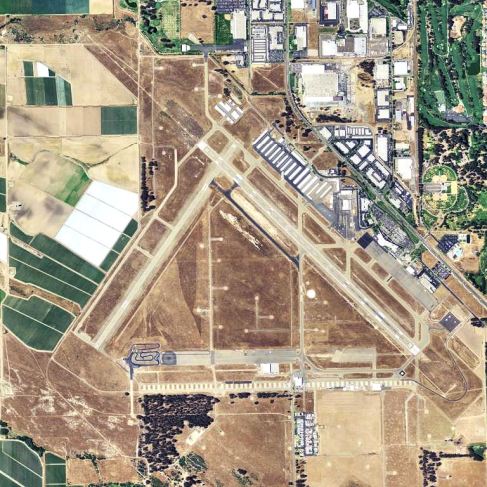Major Toxic Contamination Problem at Santa Maria Airport?
County of Santa Barbara, Santa Maria, and Airport Lawyer Up Ahead of Potential Legal Showdown with State Water Regulators

Santa Barbara County supervisors were urged on Tuesday to join with the Santa Maria Airport Board and the City of Santa Maria in demanding a delay of an anticipated enforcement action in which all three entities would be named to clean up contaminants that have been lurking in the subsurface soil of the Santa Maria Airport for at least the past 42 years. To prevent such an order from being filed by the Regional Water Quality Control Board, the airport has retained the services of political consultant Thomas Widroe and the legal services of Barry Groveman, a legal specialist in the high-stakes field of groundwater contamination, to seek a “pause” from regulators with the state water board. The County of Santa Barbara and the City of Santa Maria have retained independent legal counsel as well for what could become a protracted, financially bruising legal showdown.
To date, it remains unknown how big an area was contaminated by the toxic compounds, when that happened, what compounds were released, by whom, how far the toxic plume has migrated since it was first brought to the attention of state regulators 42 years ago, and how much it might reasonably cost to clean it all up. The environmental threat was deemed serious enough, however, that one of Santa Maria’s drinking-water wells — located adjacent to the airport property — was shut down in 1985. Other wells might be vulnerable as well.
Many county supervisors are inclined to speak softly rather than swing a big stick — “de-escalation” being the key buzzword — when dealing with the state water regulators, in hopes of quietly persuading them to hold off on issuing any cleanup and abatement orders. By contrast, Widroe and Groveman have been far sharper in their questions, wondering out loud why the state water board has not also named the Department of Defense — which operated a military airport on the site from 1942 to 1946 — or heirs of the Semco Tool and Manufacturing company, which owned the site for several decades after 1946.
Groveman noted that the Department of Defense was allowed to remove more than 200 underground storage tanks from the site with little to no regulatory oversight by the state water board. It’s an established fact, Groveman asserted, that all underground storage tanks leak. “One hundred percent,” he said.
Groveman repeatedly termed the state board’s remediation efforts over the 42 years it’s known about the problem as “anemic.” A spokesperson for the water board took exception with that characterization, pointing out that seven enforcement-related orders were issued for the site between 2015 and 2019.
While the three public entities looking at a possible enforcement order may differ on how best to approach the state water board, they all agree that the state board needs to slow things down, conduct a meaningful study as to the exact scope and intensity of the contamination, and look to the Department of Defense — which has deep pockets for toxic cleanup endeavors — to cover the costs. Neither the airport nor the City of Santa Maria has the financial wherewithal for a major remediation effort, Widroe told the supervisors. But the governor, he said, controls a significant cleanup and abatement fund.
Water board records indicate that prior efforts to squeeze the heirs of Semco proved futile even though the tool and dye company reportedly used many of the toxic chemicals identified on the seven-acre site. Attorneys for Semco at the time argued that degradation of the chemicals indicated the contamination occurred many years into the past, suggesting that the military airport was the true culprit.
The key chemical compound of concern is TCE, or trichloroethylene. It is linked with kidney cancer, cardiac defects, and non-Hodgkin’s lymphoma. In the late 1980s, Semco installed a carbon filtration system to help purify the water, but the system became saturated after a week and had to be shut down. Semco lacked the requisite financial stability to pursue the cleanup and was deemed out of compliance.
If and when an abatement order is issued, Widroe warned, all the involved parties will dig in their heels for a protracted legal battle. Millions will be spent on attorneys, he predicted, but none on cleaning up the site.




You must be logged in to post a comment.